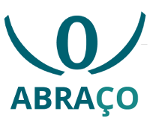Verbal Short‐Term Memory Underlies Typical Development of “Thought Organization” Measured as Speech Connectedness
Jul 29, 2019
Natália B. Mota, Renata Callipo, Lígia Leite, Ana R. Torres, Janaína Weissheimer, Silvia A. Bunge, Mauro Copelli and Sidarta Ribeiro
Formal thought organization obtained from free speech, a key feature for psychiatric evaluations, has been poorly investigated during typical development. Computational tools such as speech graph connectedness (LSC) currently allow for an accurate quantification in naturalistic settings. LSC's typical development is better predicted by years of education than by age. Among beginning readers, the LSC of stories composed of short‐term memory predicted reading independently from IQ. Here we set out to test a longitudinal sample (6–8 years old, n = 45, followed for 2 years) to verify whether the LSC is predictive of various memory measures, and whether such relations can explain the correlation with reading. The LSC was specifically correlated with verbal short‐term memory performance. The results support the notion that the short‐term storage of verbal information is necessary to plan a story. Given the limited sample size, the relationship of this interaction with reading remains inconclusive.
The whole paper is available here.
Share on Facebook





